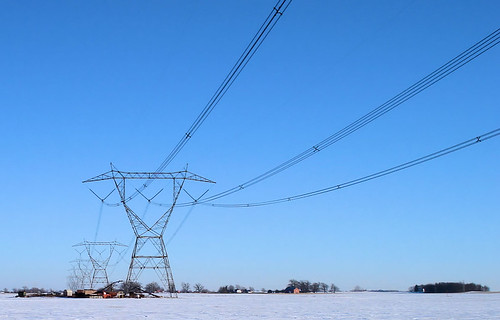
Photo Credit ogimogi
Episode 3 of the GreenMonk Podcasts – 42 mins 47 secs
My guest on this podcast is President, Chief Executive Officer, and Founder of Trilliant Bill Vogel. Trilliant are a company that
provides intelligent network solutions and software to utilities for advanced metering, demand response, and smart grid management. With more than twenty years experience solving meter communications needs, Trilliant focuses on the adoption of open standards-based technologies for electric, gas, and water utilities.
And Trilliant recently announced that it had closed a $40m funding round so I was interested to know how Bill felt smart grids could help reduce carbon footprints. I invited him to come on the show to discuss this and also to answer questions I solicited from readers of this site.
Here are the questions I asked Bill and the approx. times I asked them:
For anyone who is not sure what a Smart Grid is, can you give us a quick Smart Grid 101? – 0:18
How does that differ from the current grid infrastructure that we have? – 01:12
How does that work? – 02:22
And why would that be of benefit to consumers? – 03:48
Questions from readers:
Asa Hopkins
In the Trilliant vision of the future, what level of access will an individual consumer have to their own energy data, and with what time resolution? Will they be able to export raw data? Manipulate it through Trilliant software? Compare with neighbors? In the future will there be an open ecosystem of tools to allow individuals to learn more about their energy use and make their own efficiency gains? – 06:05
Are there intelligent enough systems right now to allow your smart meter communicate with your appliances, change your thermostat settings up or down based on energy pricing, that kind of thing, is that a reality yet or is that still a bit of a pipe dream? – 09:22
More questions from readers:
Jerry Sweeney
Trilliant sees its customers as large utility companies. Does Bill see any path where electrical grids could become more democratised. Where dynamic pricing could facilitate the sale and purchase of electricity by small consumers and producers depending on the current real time price. This could lead to huge growth in the production of distributed renewable energy and to the growth in demand response to pricing signals that suggested scarcity or abundance. How can the grid become more like eBay given the stranglehold that TSOs and Utility companies have over it. – 10:21
Are any of the utilities thinking of Demand Response in respect to demand stimulation and not just the traditional peak shaving? – 16:34
Still more questions from readers(!):
Andy
-Is there any evidence that information on its own is enough to change consumption? – 18:43
– Is multi-utility metering a real prospect/ has this been done by you? – 20:29
– Is there added value in a ‘Utility Data Channel’ that could be used for Security Systems, Water/Gas/BioHeat/Oil/Sub metering/ equipment control? – 21:47
– Is there interest in Smart Grids from makers of Electric Heating, Micro CHP, and Energy Storage Technologies? – 23:18
– Has electric heating been integrated with the operation of smart grids before? – 24:46
– Can such systems be modular and expandible? – 25:13
– Can open standards have a role in maintaining the long term value of smart metering infrastructure? – 26:00
– How can smart metering support markets in carbon reduction? – 27:45
– What happens if we do not do a form of advanced smart metering in Ireland, what is a worst case? – 29:39
– If Ireland is pioneering high levels of grid wind penetration, which other countries may follow? – 31:26
– How may energy prices impact on your business, is your technology a hedge against rising prices? – 32:28Mr Energy Rating
What is Trilliant’s definition of the minimum functionality required for a meter to become a smart meter? – 34:07How fat do the data pipes need to be between smart meters to have a real smart-grid? – 36:47
How do you overcome consumer rejection of Demand Response and avoid the situation in California where a major DR program had to be shelved because of a consumer backlash? – 38:35
You are heavily involved in the HydroOne project in Ontario – what have you learned from such a big project? – 39:50
Final question – you recently announced that you closed a $40m round of funding – what are you going to do with $40m? – 41:28
Download the entire interview here
(39.2mb mp3)




